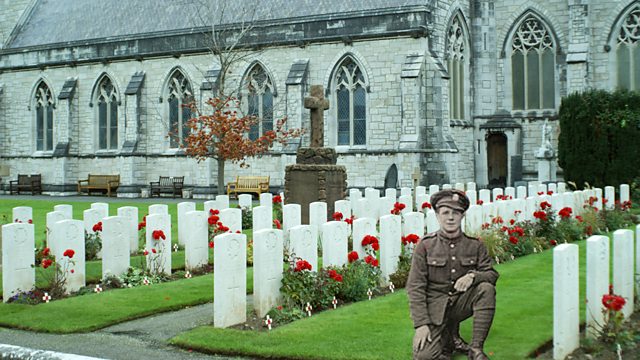St Margaret’s, Bodelwyddan: How did 86 Canadian soldiers die in North Wales?
When we think of World War One Commonwealth War Graves, Thiepval, Tyne Cot, Ypres and the Menin Gate in Belgium and France come to mind, but not Bodelwyddan in North Wales.
When we think of World War One Commonwealth War Graves, Thiepval, Tyne Cot, Ypres and the Menin Gate in Belgium and France come to mind, but not Bodelwyddan in North Wales.
Every year thousands of motorists speed past the beautiful ‘marble’ church, unaware of the 86 Canadian soldiers buried in the Commonwealth war graves that are situated in the perfectly kept churchyard of St Margaret’s Church.
There were more than a quarter of a million Canadians in Europe when the First World War ended on the 11th November 1918. They were brought to Britain and billeted in army camps near the western ports ready for shipping home to Canada.
Liverpool was one of those ports and many Canadian soldiers found themselves in an old British Army training camp at Kinmel Park, waiting for ships to take them home. Bodelwyddan was its closest village, with St Margaret’s, its famed ‘marble’ church.
Most of the men buried in Bodelwyddan died between November 1918 and March 1919 victims of the influenza epidemic which was rampant throughout Europe.
Four of the graves are different: they are the graves of soldiers that were killed when the Canadian soldiers in the Kinmel Park Army camp rioted on the 4th and 5th of March 1919.
It was a disaster waiting to happen. Promises of ships to take the 15,000 soldiers home to Canada never materialised and commanding officers failed to communicate reasons why they were being held in this remote camp months after the war had ended.
The soldiers were angry and frustrated that despite having served their country and survived the horrors of World War One, they were stuck in North Wales with food and fuel shortages and a deadly virus spreading through the camp.
Professor Desmond Morten, McGill University, Montreal “It seems to me, on the whole, the Commanding Officers made themselves scarce. An astonishing fact, which the court of enquiry conveniently passes by in embarrassment, is why the officers didn’t do what Kings regulations clearly require them to – to do their very best efforts to supress the mutiny. They clearly didn’t do that.”
The riots were, as far as possible, hushed up by the Canadian authorities and by the end of March 1919 more than fifteen thousand Canadians had been transported home.
The tragedy was that if ships home had been organised sooner, the young soldiers would have been reunited with their homeland and families in Canada. Instead, they remain buried nearly four thousand miles away, in a cemetery in North Wales.
The dead Canadians were initially buried here in mass graves, later to be reburied in graves marked with headstones carved with a maple leaf.
Today, Kinmel Park army camp, which housed 15,000 Canadian soldiers in 1919, has all but vanished, but the gravestones in the churchyard of St Margaret’s are still there, nagging at Canada’s conscience.
Location: St Margaret's Church, Off Rhuddlan Road, Bodelwyddan, Rhyl, Denbighshire, LL18 5UR
Images courtesy of Julian Putkowski and Phil Mann
Contributors: Julian Putkowski and Rev Ian Day
Duration:
This clip is from
Featured in...
![]()
�鶹�� Radio Wales—World War One At Home
Places in Wales that tell a story of World War One
![]()
Soldiers from Different Nations—World War One At Home
ANZAC and Commonwealth troops
![]()
Memory—World War One At Home
Memorials and the commemoration of wartime lives
More clips from World War One At Home
-
![]()
The loss of HMY Iolaire
Duration: 18:52
-
![]()
Scotland, Slamannan and the Argylls
Duration: 07:55
-
![]()
Scotland Museum of Edinburgh mourning dress
Duration: 06:17
-
![]()
Scotland Montrose 'GI Brides'
Duration: 06:41







